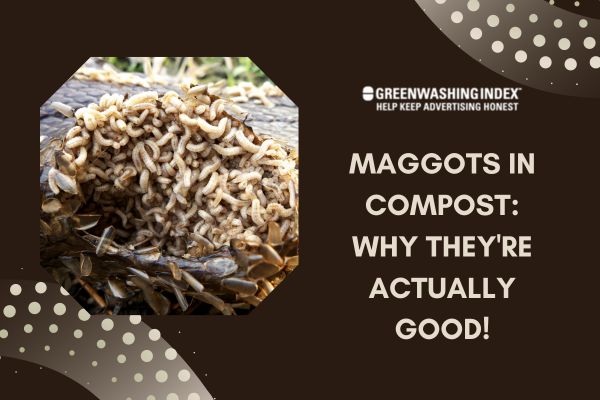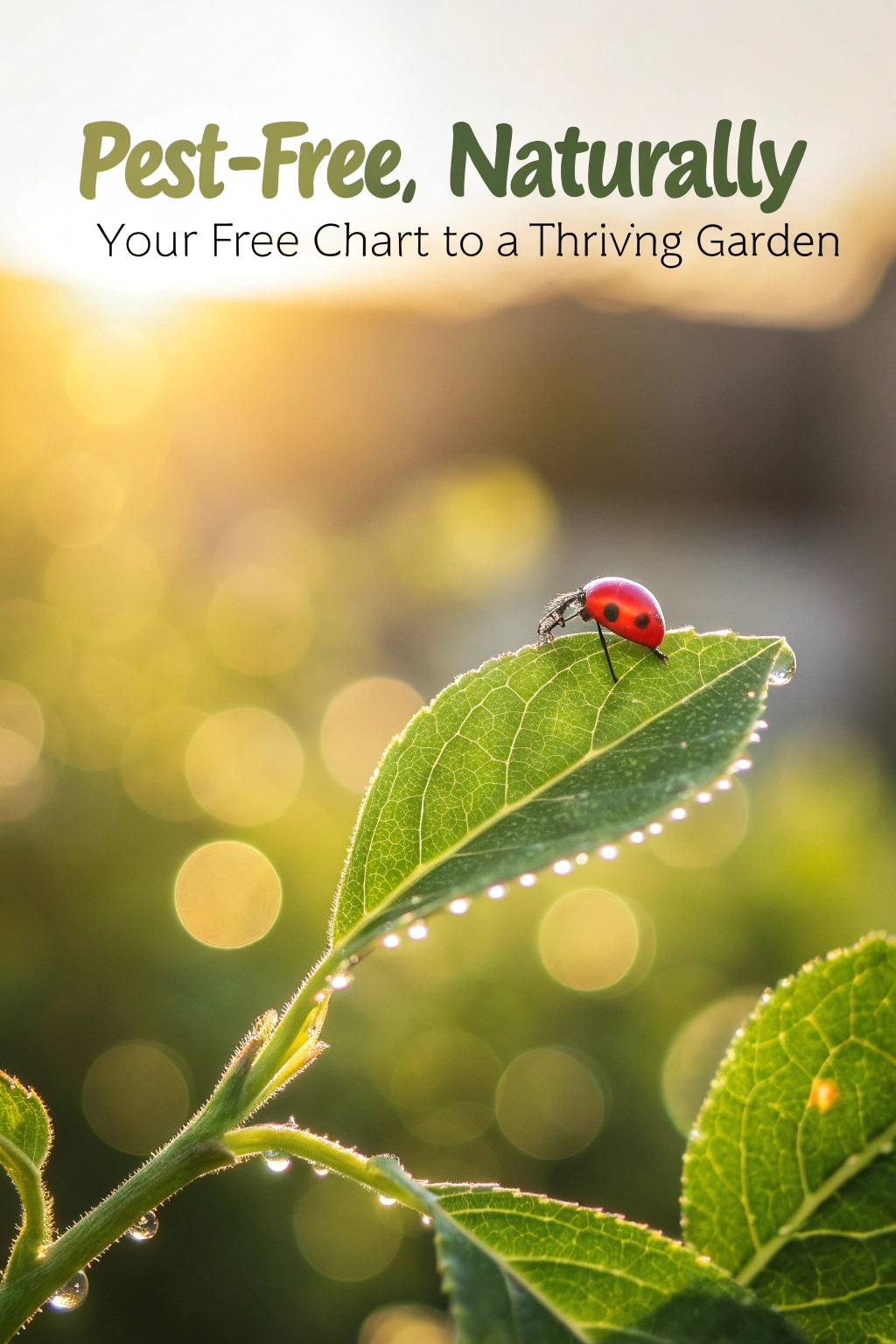Maggots in compost may initially seem alarming, but these tiny creatures play a transformative role in the decomposition process. Often misunderstood, they are nature’s efficient recyclers, breaking down organic waste into nutrient-rich soil. Their presence indicates a thriving compost ecosystem, where they accelerate decay and enrich the soil.
Embracing these unexpected allies can enhance your gardening efforts, turning what many view as pests into powerful partners for a healthier garden. With the right balance, maggots can help you cultivate a lush, vibrant landscape.
Why Maggots in Compost is Important?
Maggots in compost are often viewed with apprehension, but they play a crucial role in the composting process. These larvae, typically from flies, are efficient decomposers that help break down organic matter, turning kitchen scraps and yard waste into nutrient-rich compost.
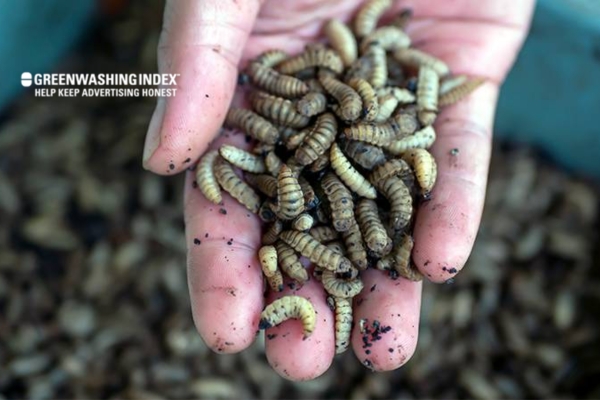
While their presence can indicate issues like excess moisture or an imbalance of materials, maggots can actually enhance the composting process. Understanding their role can help composters manage their bins effectively and maintain a healthy composting environment.
Benefits of Maggots in Compost
- Speedy Decomposers: Maggots consume large amounts of organic material quickly, accelerating the decomposition process and reducing waste volume significantly.
- Nutrient-Rich Soil: As maggots digest waste, they produce nutrient-rich castings that enrich the soil, promoting healthy plant growth.
- Biological Control: The presence of maggots can introduce beneficial bacteria and fungi to the compost, enhancing microbial activity essential for decomposition.
- Indication of Compost Health: While they may signal an imbalance (like too much nitrogen-rich material), their presence often indicates a thriving compost environment.
- Non-Harmful: Maggots do not pose a health risk; in fact, black soldier fly larvae are considered beneficial as they do not transmit diseases.
Managing maggots in your compost bin involves balancing green (nitrogen-rich) and brown (carbon-rich) materials, maintaining proper moisture levels, and regularly turning the pile to promote aeration and decomposition.
Also Read: Climate Change Jobs: 20 Earth-Saving Careers Revealed
The Workings of Maggot-Infused Compost
When I think of garden allies, I often picture bees or ladybugs. But, there’s one group of helpers that doesn’t get much praise: maggots in compost. They might not be as pretty to look at, but they’re hard workers in the compost ecosystem.
How Do Maggots Contribute to Composting?
Maggots are baby flies. When they hatch from their eggs, they’re hungry and need to eat a lot. That’s where our compost comes in as an all-you-can-eat buffet for these little critters.
Where do these maggots come from? Well, flies lay eggs on decomposing organic matter — things like kitchen scraps and garden waste. Those tiny white creatures you sometimes spot wriggling around are the maggots at work.
Here’s what happens:
- Eat up: Maggots munch on the wastes you put into your compost bin or pile.
- Digest: They break down complex materials as they feast on them.
- Enrich soil: After digesting this material, what comes out of the other end is a type of waste that helps enrich the soil.
- Speed up decay: As maggots move through the waste, they help speed up the process by breaking larger pieces down into smaller ones that decay more quickly.
Key Differences Between Helpers and Pests
Not all maggots are good news for your compost or garden. It’s crucial to know which ones are beneficial insects and which could be pests.
Garden Allies — The Good Guys:
- Black Soldier Fly Larvae: These may seem a bit scary because they’re big, but they’re super at turning waste into quality compost fast!
- Redworms: Okay, these aren’t exactly maggots, but worm larvae work similarly by eating through compost piles without any harm.
The Unwanted Guests — Potential Pests:
- Housefly Larvae: These common fly babies won’t help your garden much and can spread germs if left unchecked.
- Fruit Fly Larvae: Like their adult versions, these kids hover around your fruit bowl; they love overripe produce but don’t offer much for soil health or plant growth.
Remember this:
Garden allies in our midst,
Some worms wiggle while others twist.
Keeping our gardens healthy and strong,
Make sure nothing goes wrong!
Understanding who’s who among these wriggly residents lets us encourage more beneficial insects that serve as organic gardening helpers while keeping an eye on any pests that might upset our sustainable composting efforts or bother us in other ways.
Also Read:Composting Cheese: Can It Be Done? Complete Guide
Types of Maggot Garden Allies
When I dig into my compost pile, I sometimes see little wriggly creatures – maggots. Now, before you say “yuck,” let me tell you that these little guys might just be your garden allies. Not all maggots are the same, though. So, let’s get to know our unexpected friends better.
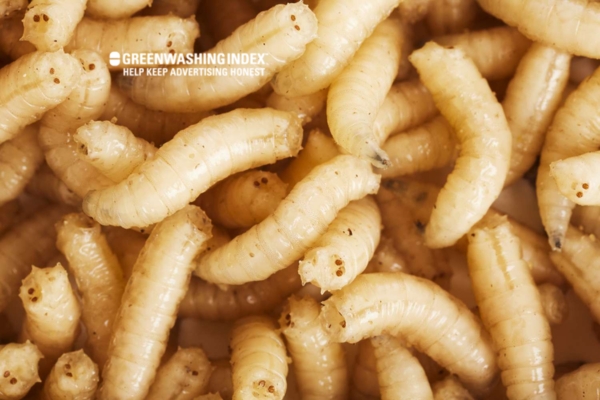
Spotlight on Black Soldier Fly Larvae in Your Pile
Black Soldier Fly larvae are stars when it comes to breaking down waste in the compost. They look different from other maggots because they are quite big and have a fat body that is a soft gray or brown color.
- Features: These larvae grow up to an inch long and have small segments across their bodies. A fun fact: they don’t have mouths because they’re too busy eating with the rest of their body!
- Benefits: The amazing thing about them is that they eat almost anything organic and transform it into rich soil stuff, which is good for plant growth. These guys work fast, so you’ll notice your compost breaking down quicker than usual.
- Ecological impact: By doing this, Black Soldier Fly larvae actually help reduce waste going to landfills! Plus, as they munch through waste material, they do not spread diseases – making them pretty hygienic workers for our compost ecosystem.
These creatures might be nature’s way of telling us she’s got her own efficient recyclers working 24/7! So next time you spot these squirming grubs in your pile, remember they’re one of the best organic gardening helpers out there!
Recognizing Housefly Larvae – Friend or Foe?
Housefly larvae commonly find their way into composts, too, but are different from Black Soldier Fly babies.
- Characteristics: They are much smaller than Black Soldier Fies’ babes and are usually pale white or off-white in color with thin bodies.
- Are they reliable garden allies? Well, this is where things get tricky. While housefly larvae do eat decomposing organic matter like food scraps in your bin or pile–and thus contribute to soil enrichment–they could become pesky if left unchecked because adult houseflies can carry bad germs around.
Next time you spot maggots wiggling around in your soil or compost heap – take a second look. (italic)They might just be some hard-working pals helping keep your garden green without any fuss at all!
Also Read:Rice Composting: Ultimate Guide to Nutrient-Rich Soil
Why do I have Maggots in my Compost?
When I first noticed the small, wriggling creatures in my compost pile, I admit I was a little taken aback. Maggots? In my garden? But as it turns out, these little guys are actually allies in the grand scheme of organic gardening. Let’s dive into why these unexpected guests make their way to our compost piles.
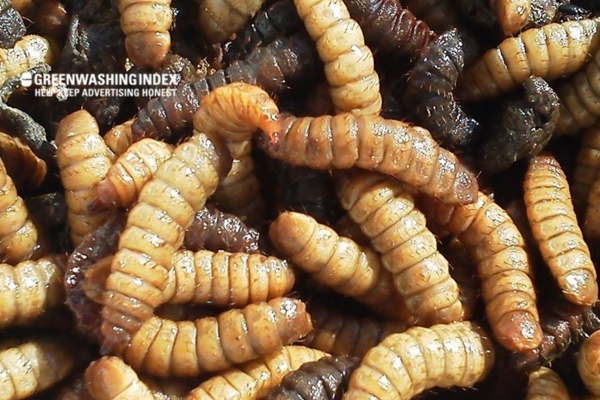
The Attraction Factor: What Brings them to your Pile?
My first thought was: “Why is this happening?” It turns out that compost heaps create the perfect home for maggots because they love moist and decaying environments. When you throw kitchen scraps like fruit peels, vegetables, or even meat products (which is not always recommended) into the mix, it becomes an all-you-can-eat buffet for them.
The heat from decomposing organic matter is another big draw for these critters. As microorganisms break down the waste material in a compost pile, they generate warmth — much like how our bodies get warm when we’re active. This coziness attracts female flies looking for a prime spot to lay eggs.
And let’s not forget about accessibility! A compost pile that’s open or not properly covered might as well have a welcome sign for flies and their soon-to-be maggot babies. These insects don’t need much of an invitation; if there’s an opening and food available inside, they’ll find their way pretty quickly.
Maggots in Compost Good or Bad
Maggots in compost can be a controversial topic among gardeners and compost enthusiasts. While many people may find the sight of maggots unappealing, these larvae, particularly from the black soldier fly, play a crucial role in the composting process. Understanding their benefits and how to manage their presence can enhance your composting experience.
The Role of Maggots in Compost
Maggots, primarily the larvae of the black soldier fly (Hermetia illucens), are voracious eaters that significantly aid in breaking down organic matter. They thrive in warm, nitrogen-rich environments, making compost bins an ideal habitat.
As they consume kitchen scraps and yard waste, they expedite the decomposition process, transforming these materials into nutrient-rich compost more quickly than other methods might allow.
Maggots in Compost Bin
Maggots in compost bins can often be a source of concern for home composters, but they play a crucial role in the decomposition process. These larvae, primarily from the black soldier fly, thrive in nutrient-rich and moist environments, making compost bins an ideal habitat.
While their presence can indicate certain imbalances in the composting process, they also contribute significantly to breaking down organic waste. Understanding their role can help composters manage their bins more effectively.
Creating an Inviting Environment for our Allies
Now that we know why maggots set up shop in our composts, let me share how we can create inviting spaces specifically for beneficial larvae like those of the Black Soldier Fly:
- Balance Your Greens and Browns: Include a good mix of green materials (kitchen scraps) and brown materials (leaves or cardboard) so your pile has all the nutrients these helpers need.
- Keep It Moist: Maintaining your heap with just enough moisture will make it attractive to helpful maggots without overdoing it.
- Let Some Air In: Good airflow helps maintain an environment where helpful maggots can thrive without letting odors attract too many pests.
- Moderate Size: Keep your heap at a manageable size so you can more efficiently maintain its condition – neither too big nor too small.
By sticking to these simple conditions, you invite nature’s recyclers into your garden ecosystem without turning your backyard into bug-central.
Also Read:VHS Tape Recycling: Your Essential How-To Guide
Safeguarding your Garden Paradise from Overpopulation
My garden is like a small bit of paradise to me. Just like any good thing, it can face some challenges. One such challenge is making sure there are not too many maggots in my compost pile. Yes, they are part of my garden allies, but too many of them can become a problem. I’ll share some tricks on how to keep their numbers just right.
Earth-Friendly Tactics
In my compost and around my plants, I sometimes find lots of tiny white creatures wriggling around – these are the maggots. They help break down waste into rich soil, but if there are too many, it’s not as good. So, what do I do?
To keep things in balance naturally takes a few careful steps:
- Introduce Beneficial Nematodes: These are tiny worms that you can’t usually see with your eyes alone. They enjoy munching on the larvae of flies that turn into maggots.
- Balance Your Compost: If you put the right mix of green and brown materials in your compost pile – things like kitchen scraps for greens and leaves or cardboard for browns – it helps control maggot numbers.
- Keep It Covered: Placing a layer of soil or finished compost on top creates an environment less attractive to the flies that lay eggs.
Remember, we want these critters to help us just enough without taking over.
Companion Planting & Natural Predators
Plants help each other out when they grow side by side; this is called companion planting. There’s also another group of helpers: natural predators. Here’s how they work together to keep maggot numbers down:
- Grow Herbs: Some plants, like mint or basil, give off scents that discourage flies from laying eggs.
- Attract Predatory Insects: By planting certain flowers or herbs, we draw in insects like ladybugs or wasps that feed on maggots.
It’s amazing how nature has its own checks and balances when we grow things thoughtfully!
Cultural Controls Without Harm
Using chemicals isn’t something I want in my garden sanctuary. Thankfully, there are cultural methods – basically habits one grows into:
- Turn That Compost! If you stir up your compost now and then, it exposes the maggots to sunlight and air, which they don’t really like.
- Adjust What You Add: If you have added a lot of kitchen scraps recently (which adds more nitrogen), try putting more fallen leaves or shredded newspaper (adding more carbon) next time.
These easy practices create less favorable conditions for maggots without hurting anything else living there.
Through these methods – attracting natural helpers with companion plants and beneficial bugs, balancing what goes into the pile, stirring it up occasionally, and keeping it covered – managing maggot populations becomes simple rather than stressful while still caring for our little corner of earth tenderly as proper garden allies should be treated!
FAQ’s
Are maggots good for plants?
Maggots are beneficial for plants as they accelerate compost decomposition, enriching soil with nutrients and improving overall plant health without causing harm.
Are maggots good for soil?
Maggots are beneficial for soil as they decompose organic matter, enriching it with nutrients and improving plant growth. They act as natural recyclers, breaking down waste quickly and enhancing compost quality, which is crucial for healthy soil ecosystems.
Are maggots good for compost?
Maggots in compost are beneficial as they accelerate decomposition, consume organic waste, and enrich the soil, turning scraps into nutrient-rich compost for plants.
Conclusion
Maggots in compost may initially evoke a sense of disgust, but they play a significant role in enhancing the composting process. These larvae act as efficient decomposers, breaking down organic material rapidly and enriching the soil with nutrient-rich castings.
By embracing these creatures as allies, gardeners can foster a healthier ecosystem that accelerates waste decomposition and improves soil quality. Recognizing the benefits of maggots can transform perceptions and promote sustainable gardening practices, ultimately leading to thriving plants and a more productive compost system.

